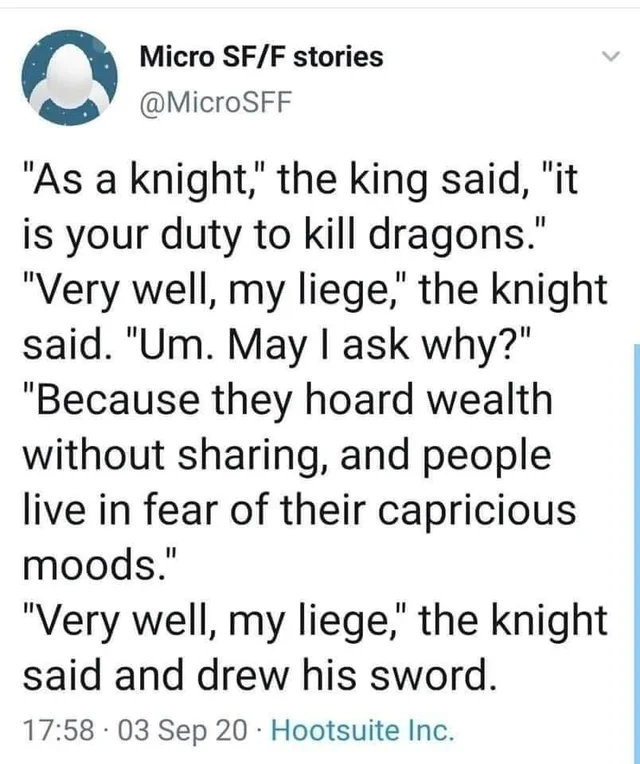this post was submitted on 11 Jan 2024
705 points (97.7% liked)
People Twitter
8035 readers
1429 users here now
People tweeting stuff. We allow tweets from anyone.
RULES:
- Mark NSFW content.
- No doxxing people.
- Must be a pic of the tweet or similar. No direct links to the tweet.
- No bullying or international politcs
- Be excellent to each other.
- Provide an archived link to the tweet (or similar) being shown if it's a major figure or a politician.
founded 2 years ago
MODERATORS
you are viewing a single comment's thread
view the rest of the comments
view the rest of the comments

I think those tropes were mostly accidents actually, in medieval times you'd slay a dragon because it was literally a demon from hell, like that's literally where fire breath comes from, because their mouth is a direct portal to hell and opening it can unleash the fires of hell.
Tolkien is probably one of the first authors to portray the Dragon's horde in a context of a sign of the Dragon's immoral character, as opposed to an incidental that made for a good source of loot for the hero to get a cool new toy from, and even then that's how most narratives involving dragon's hordes treat the actual horde, the horde itself, given back to the people or not, is not especially relevant except for a few choice items which the hero takes a shining to and keeps, it'll happen in D&D just cause.
Just to point out, belief and depictions of dragons transcend European literature and mythology, so limiting dragons to European medieval depictions and Tolkien means ignoring other cultural depictions.
Overall Smaug was based on elements of Beowulf's Bane and Norse mythology's Fafnir, and Fafnir is considered Norse symbolic for greed.
Yeah but we're talking about a euro-centered perspective anyways since it's a knight out to slay the dragon and not an emperor seeking council of their dragon ancestors or Quetzalcoatl being Quetzalcoatl as usual
Yeah, although Western and Eastern mythological giant flying reptiles are both called "dragons," they're very different creatures.
I assumed from the talk of a king and knight that these were euro dragons
I believe the spelling for the mass of treasure is "hoard" as opposed to the mass of bodies, "horde".
But what if the dragon collects human friends?